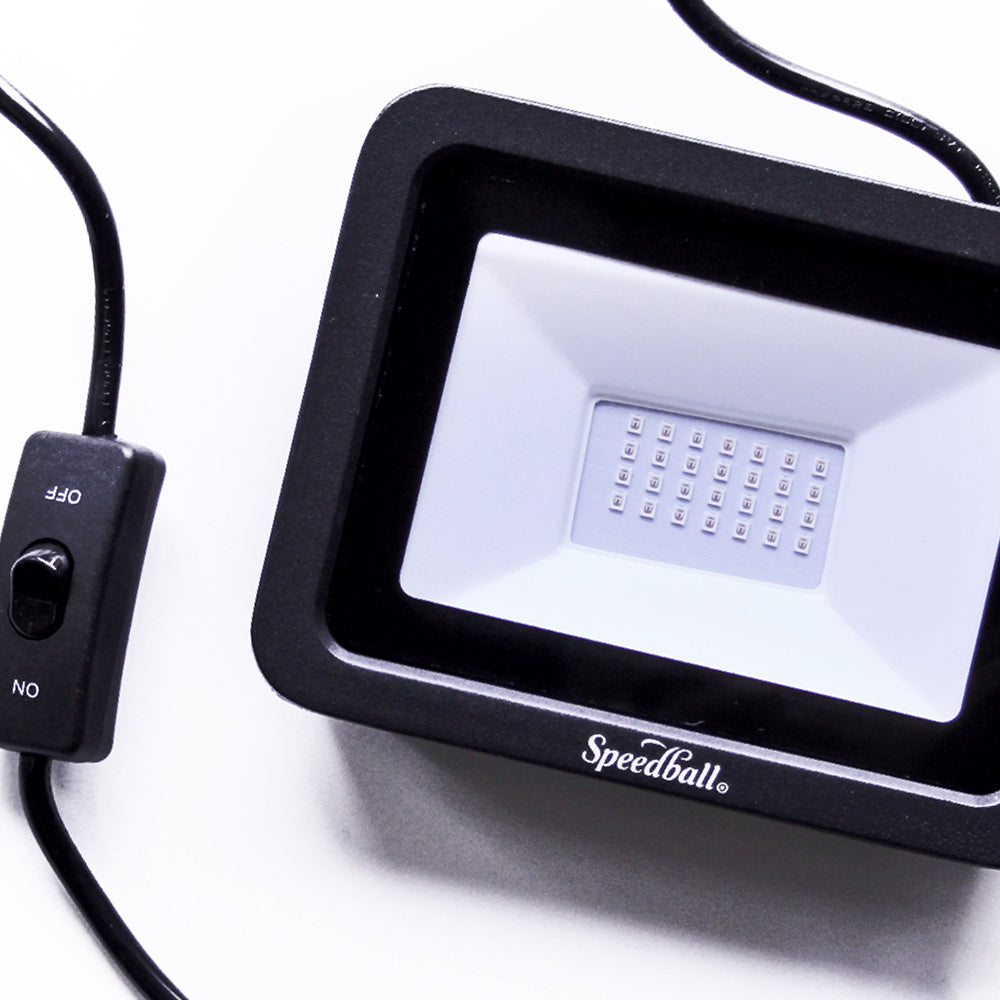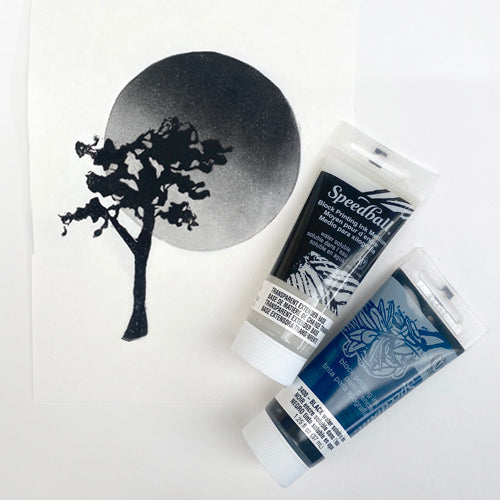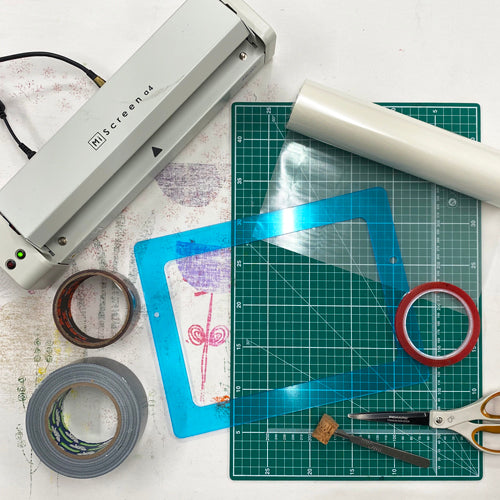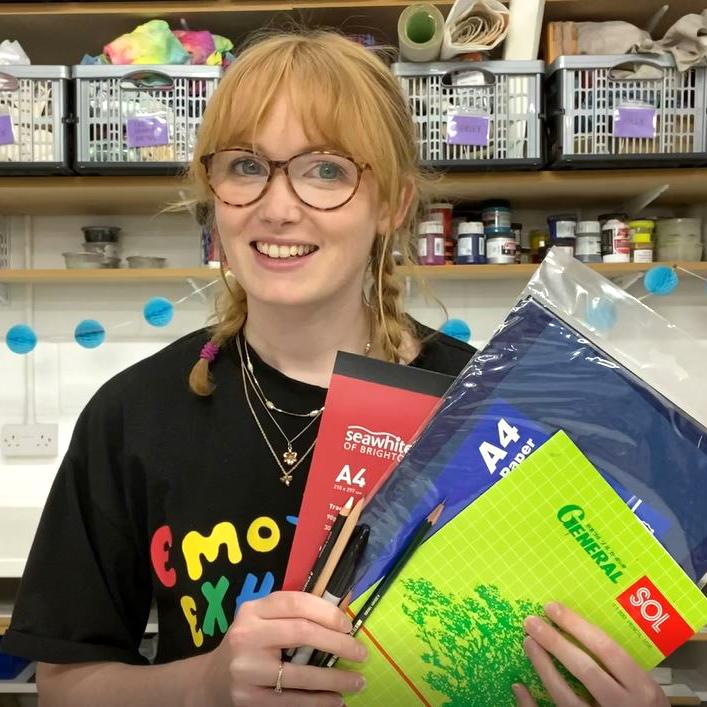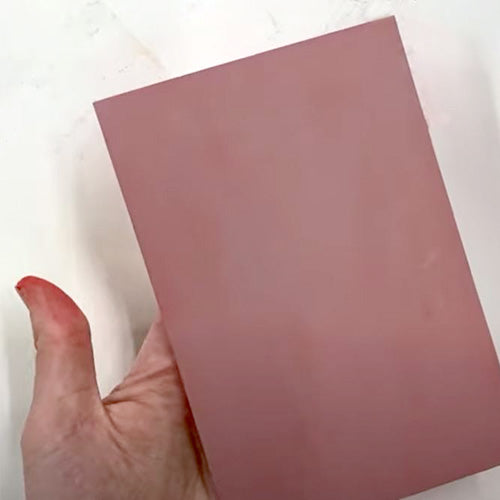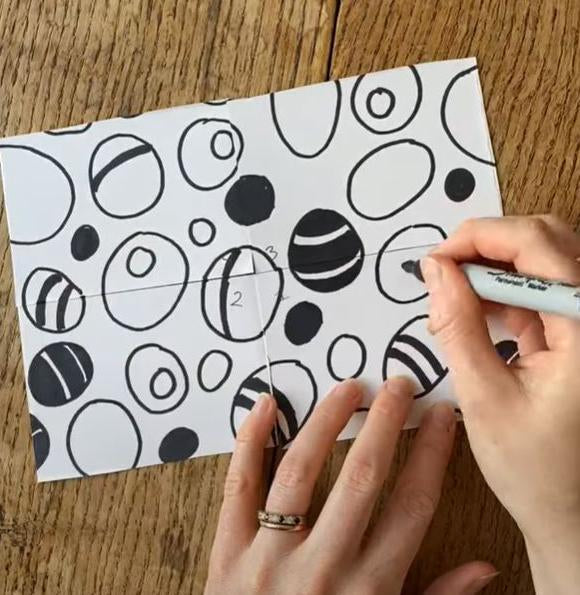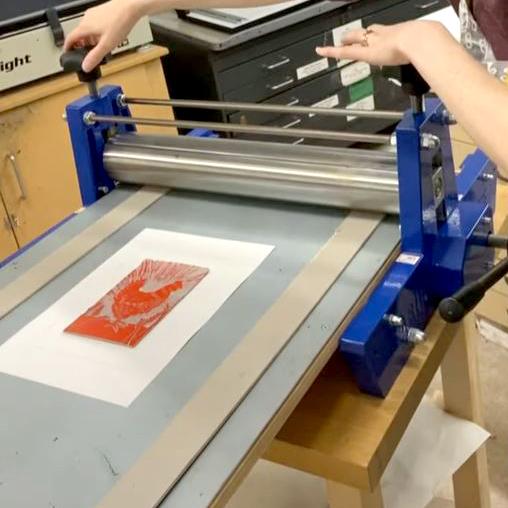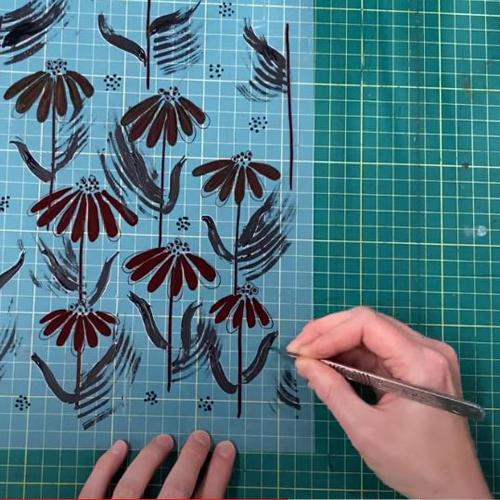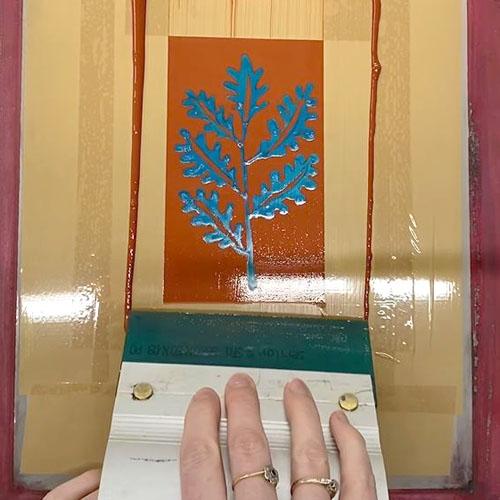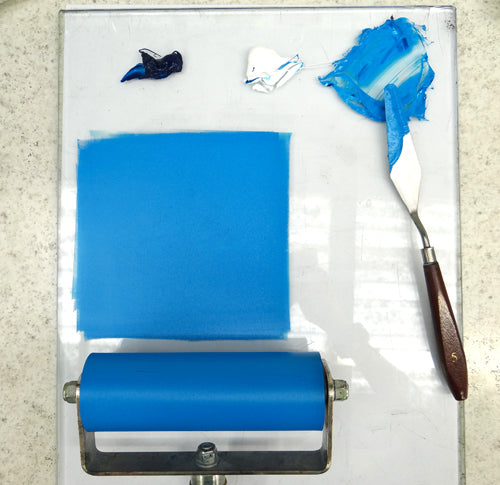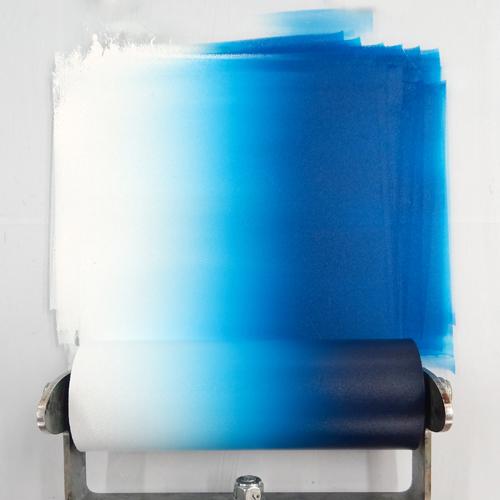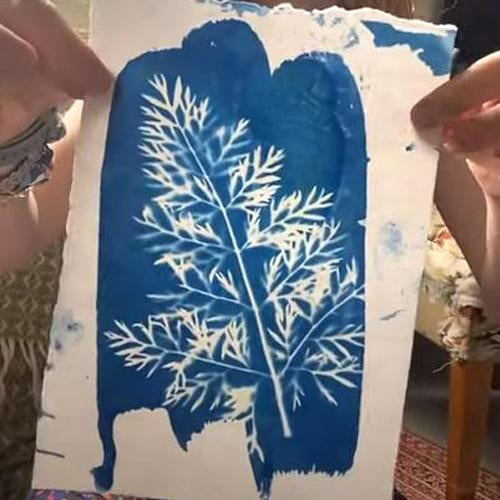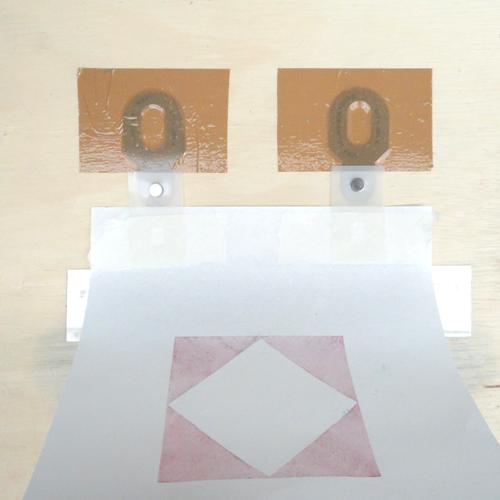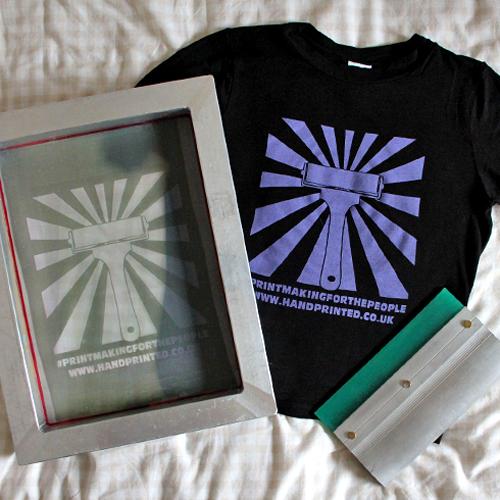-
Speedball’s Speed Screens are a great new way of exposing a design at home without the mess of Photo Emulsion. Speed Screens are light sensitive, pre-coated emulsion mesh sheets. This means they’re ideal for a home studio setup as you don’t need anywhere dark for a screen to dry. They come in packs of three …
-
Speedball’s new UV Light makes it so simple to expose screens at home. It has a fold-out bracket that can be mounted or hand held. Its small size makes it ideal for a home studio setting. For our project, we hung the might from a tripod, but you could hang it from the back of …
-
Speedball Block Printing Ink is a great water-based ink for relief printing! We love the combination of black and extender to make beautiful grey tones, like this graduated moon, made using the rainbow roll technique! Start by drawing your design onto a block. We are using a piece of Speedy Carve to create two blocks …
-
We are often asked for guidance with screen printing and the most common request is for help with exposing screens and the problems encountered. Benjamin Franklin is quoted as saying “By failing to prepare, you are preparing to fail” – I don’t know how good he was at screen printing but it sounds like he …
-
Thermal Screens or Thermofaxes are often made using traditional photocopy technology from the 1950s. However, here at Handprinted, we use a machine called a MiScreen to process our screens. The MiScr. . .
-
Thermal Screens or Thermofaxes are a great alternative to exposed silkscreens. They are made using a Perspex frame stretched with RISO digital screen mesh. The design is transferred to the me...
-
We’ve loved creating videos and blogs to aid and inspire your printmaking throughout 2021! What started out as a way of reaching our customers whilst our workshops had to be closed down, turned into an ongoing project that’s reached so many more printmakers all over the world. Thank you for watching our videos and supporting …
Continue reading "Video Round Up 2021"
-
It can be tricky to see where you are carving when making a lino block, making it more easy to make mistakes. An easy solution to this problem is to stain the lino. That way, the colour of the lino on the surface is different to the inside, allowing cut marks to show easily. Read …
-
This method is quick and simple. No digital equipment or software is required: all you will need is paper, a pen/pencil, tape and scissors. With this technique, a repeat pattern can build seamlessly with no awkward joins or obvious lines. It’s perfect for a scatter design and can be used for screen printing or block …
-
Etching presses aren’t just for printing etchings. They have a bed that is rolled between two rollers, the top of which is adjustable in height. This makes it great for printing from lots of different surfaces as the tension is customised for each print! Printing a linocut with an etching press is easy with a …
-
If you are completely new to linocut and would like help getting started, you are in the right place! Read on or scroll to the bottom to watch a video. Start with a piece of lino. There are several to choose from, from traditional Lino to Easy Carve to Softcut. You can learn more about …
-
We have found Zest It Printmakers Washdown an incredibly useful addition to our studio. It’s designed to remove dried on acrylics and so far has got us out of a couple of scrapes. Here are a few ways to use it in your studio: Removing dried on water-based relief printing inks from rollers, blocks and …
-
Making exposed screens is a fantastic way of creating screen prints from your bespoke artwork. If you’d like to make exposed screens at home but would rather skip the digital processes then we have a great way of creating screen films with analogue methods! For detailed advice about exposing your own screens at home, head …
-
Using Drawing Fluid and Screen Filler can create a semi-permanent design on a screen, allowing you to print multiples of your design without stencils, over several sessions if you like. This is not a photographic technique so there’s no need for a light source, a computer or a dark space. This makes it accessible to …
-
Caligo Inks are oil-based but water-washable so they are a fantastic option for your printmaking practice but how do we clean up after using them? Read on or scroll to the bottom of the page for a video. No solvents or special cleaners are needed to clean up Cranfield’s Caligo Inks. Fill an old jug …
-
When mixing Caligo Relief Printing Inks (although this also applies to other brands), we can choose between adding Extender or Opaque White when we want a paler colour. They produce quite different results. Watch our video at the bottom of the page or read on. Extender is a colourless ink. It will make colours more …
-
Cyanotypes (sometimes called blueprints or photograms) are made using a really old process that uses light to create designs on fabric and paper. Scroll to the bottom of the page to watch a video on the process or read on. We are going to need a cyanotype kit. The kit contains two bottles, each with …
-
Sometimes, when we use Ternes Burton pins and tabs, the tape sticks to the printing paper making a mess. We can choose to cut our paper a little longer so the excess can be trimmed but there’s another way that doesn’t waste paper! Watch the video below or read on. If you haven’t heard of …
-
When you’re carving a lino block it can be handy to be able to see how your block will print before you ink it up. By taking a rubbing of your block you can get an idea of what your final print might look like. Scroll to the bottom of the page for a video …
-
Like many others over the past year, I have been working on a lot of my printmaking projects at home. However, being limited on space doesn’t stop me from trying new things. In this blog post, I will be sharing how I exposed a screen at home in my tiny bedroom! You can adapt this …


